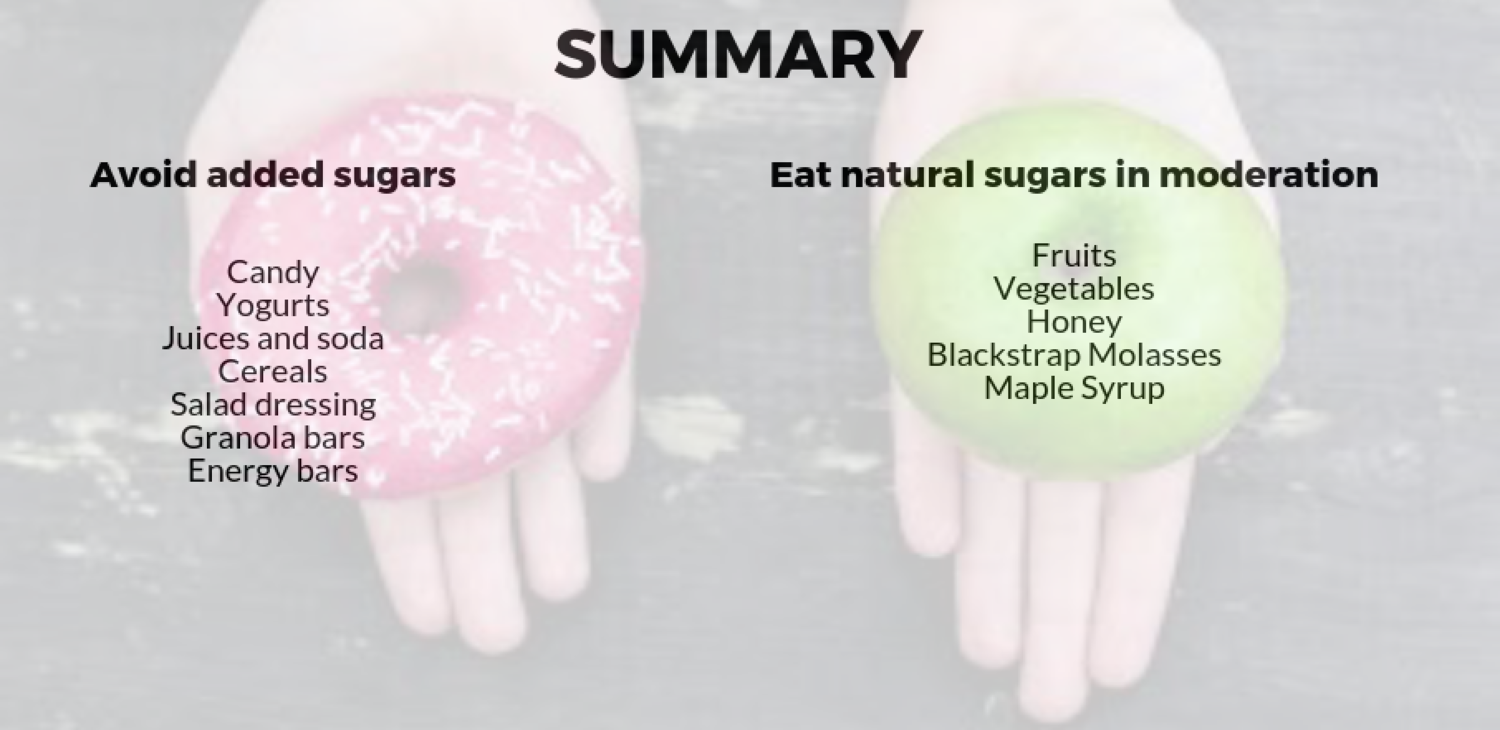Is all sugar created equal?

Is all sugar bad? Over the past few years, our ideas around sugar and fat have changed drastically. Suddenly fat has become increasingly trendy, while sugar is demonized. I spoke with an ambassador of the popular protein bar Square Bar and she said that the most common comment she gets from unhappy shoppers during grocery store demos […]
Is all sugar bad?
Over the past few years, our ideas around sugar and fat have changed drastically. Suddenly fat has become increasingly trendy, while sugar is demonized. I spoke with an ambassador of the popular protein bar Square Bar and she said that the most common comment she gets from unhappy shoppers during grocery store demos is “wow that’s a lot of sugar”. Let’s dig into what ‘sugar’ really is.
What are glucose and fructose?
Sugar is a simple carbohydrate made up of fructose and glucose. In fact, the fructose-to-glucose ratio found in fruit is roughly the same as table sugar (40/50 for fruit, 50/50 for table sugar). Generally speaking, glucose is what causes your blood sugar to spike, while fructose is processed in the liver and doesn’t have the same effect.
MYTH: fructose doesn’t cause the blood spike, it must be better for us.
Fructose is processed in the liver in small amounts. When we overload our system with concentrated forms of fructose (agave, high fructose corn syrup), it stresses the liver and can even cause scarring. This toxic load on the liver also results in triglyceride production, which causes a slew of health problems.
Glucose is absorbed in the blood and causes our blood sugar to spike. When your blood glucose increases, the pancreas has to release insulin to ultimately bind to glucose and turn them into fat cells. It’s when we overload our body with the glucose that makes the pancreas works extra hard and is desensitized to the glucose. Once this occurs, it can lead to health conditions like type 2 diabetes.
Added Sugars: fruit vs. Candy
While all sugars will cause an increase in blood sugar, not all of these sugars are created equal. Don’t just look at how much sugar is in a food — look at the whole package.
MYTH: when trying to make healthy choices, just choose the foods that are lower in grams of sugar.
1 large banana contains 17g of sugar while 1 Frosted Brown Sugar Pop Tart contains 15g of sugar. Does this make the pop tart the healthier choice? NO. Natural sugars are very different from added sugars.
The ingredient list for the pop tart takes a whole minute to read (red flag) and includes added sugars like high fructose corn syrup along with many other additives, while a banana has no ingredient list at all. Also, the sugar found in the banana naturally comes with a bundle of other vitamins, minerals, and fiber. These other components will slow down the absorption of the sugar you are eating, reducing the blood sugar spike. By doing this, your pancreas doesn’t get overloaded with glucose all at once like it would if you ate the pop tart.
putting sugar into perspective
The American Heart Association (AHA) recommends women have no more than 24g of sugar per day (6 teaspoons) and men no more than 36g/per day (9 teaspoons). To put this in perspective, one 12 oz. soda is 10 teaspoons of sugar. The average American consumes 52 teaspoons of added sugar per day (152 lbs per year).
The Nurse’s Health Study monitored 90,000 women over 8 years and found that drinking one soda per day caused women to gain an average of 10 lbs over 4 years and doubled their risk of getting type 2 diabetes.



leave your comments!